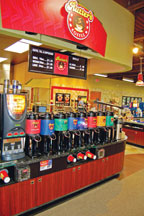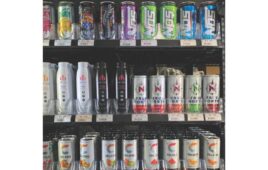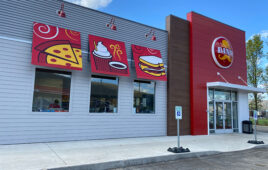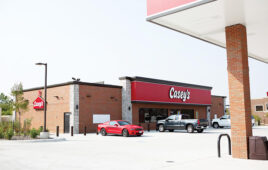 Sales of coffee dominate sales of hot beverages, making up 83.3% of the total hot beverage market in the U.S. Coffee consumption is expected to increase through 2015 at an average annual rate of 2.7%, while tea consumption is expected to increase through 2015 at an average annual rate of 3.1%, according to the National Coffee Association’s (NCA) National Coffee Drinking Study.
Sales of coffee dominate sales of hot beverages, making up 83.3% of the total hot beverage market in the U.S. Coffee consumption is expected to increase through 2015 at an average annual rate of 2.7%, while tea consumption is expected to increase through 2015 at an average annual rate of 3.1%, according to the National Coffee Association’s (NCA) National Coffee Drinking Study.
Positive expectations for continued growth in coffee sales, despite its “mature” product position in the market, are due to the innovations in premium coffee products. Despite the economic woes, 37% of total coffee consumed was classified as “gourmet,” NCA reported. This suggests consumers were set on drinking good coffee even in the face of an uncertain economy.
NCA also noted an increase in the average price of coffee by 25% since 2007, owing largely to operators having to pass on commodity price increases to consumers. This trend has eased after peaking in early 2011.
Finding Your Niche
With c-stores putting much focus on the coffee category, consumers stop to buy coffee at c-stores more than they fill up their cars. For chains like Rutter’s Farm Stores in York, Pa., the appeal for coffee goes beyond the consistency of the beverage itself. It is the customization.
“We’re in an era of options,” Weiner said. “People want to personalize everything. I find it in food and certainly in coffee and fountain drinks. Everybody is making things the way they want it, and they become very particular about it. It becomes their beverage or their sandwich, salad or whatever they’re consuming.”
Rutter’s sells seven different coffees, available 24 hours a day. Most condiments, which include milks, creamers, whipped cream, and caramel and chocolate syrups, are merchandised in a self-service cold well.
Aside from satisfying demands, condiments help convenience stores compete more effectively with the likes of Starbucks, Dunkin’ Donuts and other coffeehouses by leveling the playing field on niche flavors.
Most c-stores have embraced the consumer’s desire for customization by offering broad coffee and condiment selections and stations for customers to prep their cups the way they like. C-stores are improving coffee quality in line with greater demand for gourmet varieties and taking great strides to use filtered water to ensure flavor consistency from store to store. Some operators push the coffee envelope further by promoting higher-caffeinated brews and functional ingredient additives.
Profile of today’s Coffee Customer
According to the latest National Coffee Drinking Study from the National Coffee Association (NCA), 40% of 18-24 year olds are drinking coffee each day—this is a sharp rise from the 31% of this age group who said they enjoyed a daily dose of java during 2011. This increase brought consumption of coffee among this age group back to its 2009 level.
• In the same National Coffee Drinking Study, 54% of adults age 25-39 reported drinking coffee each day, another significant increase from the 44% who reported drinking coffee daily during 2011.
• Why the strong increase is less clear: 29% of the 18-39 age group said they felt better about their financial situation (only 12% of those over 40 felt similarly positive), but no other group shared the same focus on finances. Overall, 46% of coffee drinkers characterized their financial situation as “the same” when compared to 2011.
• The study also found that over 75% of U.S. adults drink coffee, and 58% reported drinking coffee daily.
• Coffee drinkers still outnumber tea drinkers in the U.S.: 183 million coffee drinkers to 173.5 million tea drinkers. In 2012, combined sales of coffee and tea at restaurants and drinking places is estimated to total $18.7 billion, according to David Sprinkle, publisher of Packaged Facts. He also noted strong increases in demand for specialty coffee drinks (cappuccinos, lattes, Americanos and Macchiatos), with Macchiatos surging in popularity (as measured by market penetration) by 50% since 2007.




